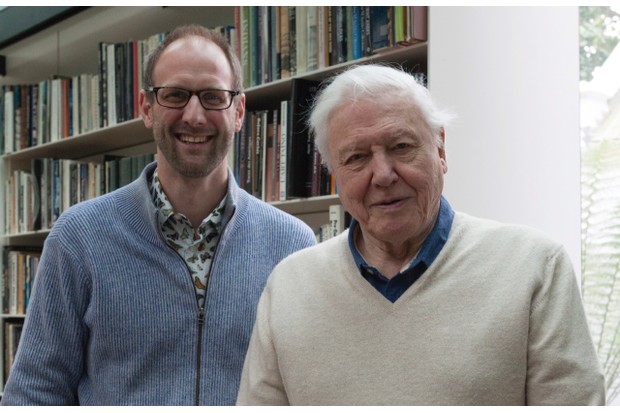December is a winter month in the UK, a time when the days are short, the nights are long and the temperatures cold. While at first glance it might seem like the natural world has gone to sleep, look a little closer and you'll find that there's plenty to spot, from squirrels to vibrant winter birds, and from stoats to brown hares.
Common woodpigeon (Columba palumbus)
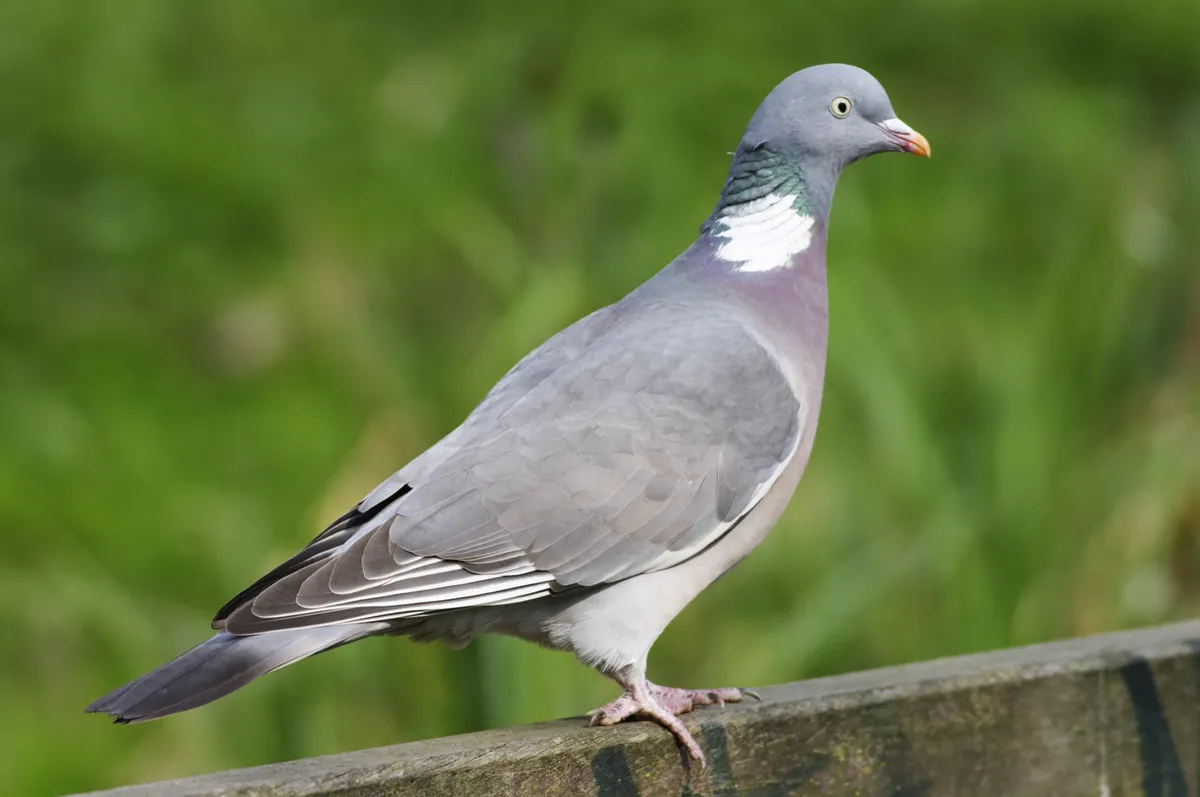
British garden birds are some of the most intensively studied in the world, with huge amounts of data from surveys such as the BTO’s long-running Garden BirdWatch. Records from that project show woodpigeons are consistently among the top four species in gardens during the winter, quite a change from several decades ago. This is down to how much food there is for them now, as a result of intensive arable farming and garden bird feeding.
So, while many people dislike seeing woodpigeons waddling across lawns or patios or perched clumsily on bird feeders, hoovering up seed intended for ‘prettier’ species, they fail to acknowledge their part in the pigeons’ stellar success! Sadly, the super-abundance of woodpigeons leaves us indifferent to their charms, in particular their wonderful five-note coo, so soft and mellow, yet throaty and rich. Surely, it is one of our very best bird sounds?
Hazel (Corylus avellana)
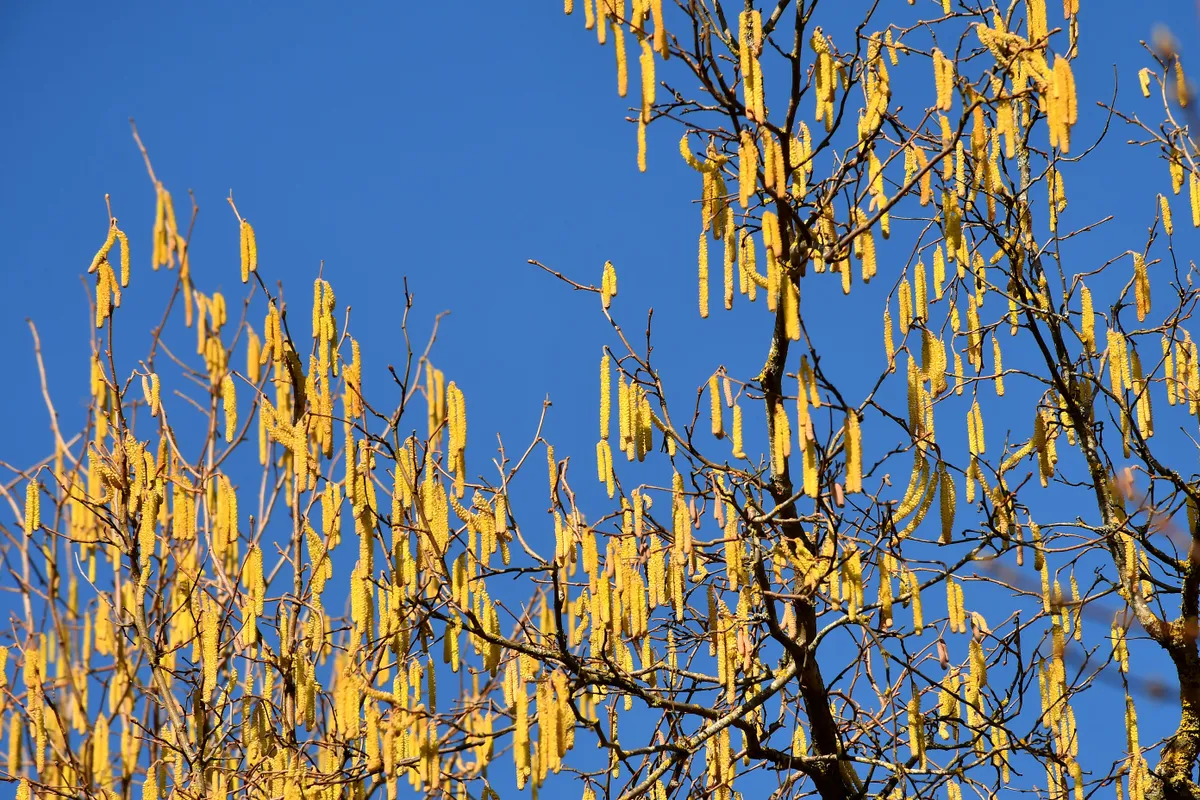
Winter divides people. But even before the year is out, there are signs of new life. Hazel trees already have male catkins – small and green at first, then swelling and opening in a blaze of yellow. “There’s something deeply comforting about the cyclical nature of botanising through the seasons,” writes Leif Bersweden in Where the Wildflowers Grow. Every December catkin holds the promise of spring.
Muntjac (Muntiacus reevesi)

With their pint-sized stature and fondness for lurking in dense undergrowth, muntjacs often fly under the radar. But in winter, vegetation dying back improves your chances of a sighting. The introduced deer – originally from south-east China – are most active around dawn and dusk. Look out for animals the size of a Collie, with a hunch-backed profile and tiny, hook-like antlers in males.
Learn more about deer:
London plane (Platanus × hispanica)
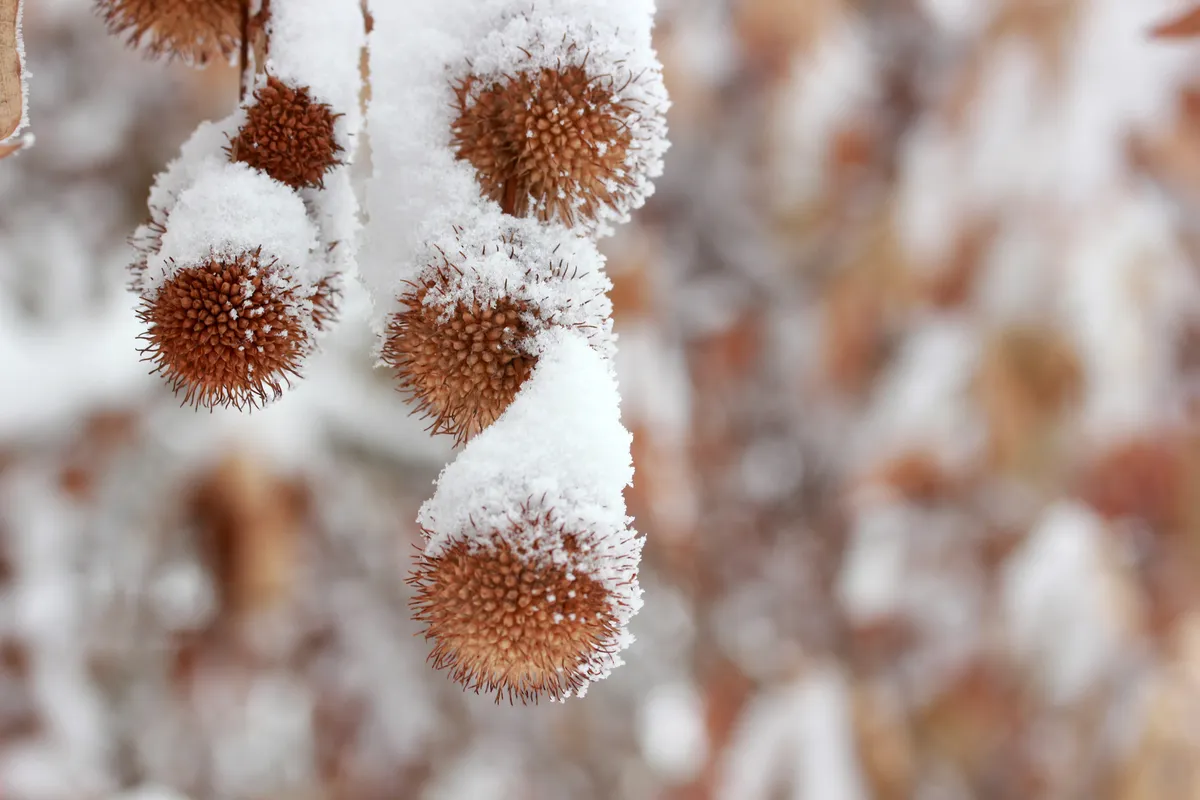
Not native and technically a hybrid, the London plane was created in around 1650 by crossing the oriental plane and American sycamore. Yet today, no tree is more closely associated with the UK capital. Its shade-giving foliage and pale flaky bark are vital to the city’s character. In fact, the plane isn’t even the commonest tree in London, nor is it confined to the metropolis. Its toughness – it is exceptionally tolerant of air pollution – means it has been planted on city streets throughout Britain and Europe.
Come December, this most urban of trees becomes an alternative Christmas tree, with hundreds of baubels festooning its leafless branches. Inside every fuzzy brown baubel is a mass of achenes – small fruits, each consisting of a seed attached to a tuft of hair to aid eventual dispersal on the wind next spring or summer. In the meantime, the fruiting balls hang there, looking highly decorative.
Learn more about trees in winter:
Goldeneye (Bucephala clangula)

The goldeneye must be the only duck to share its name with a film about secret agents, and males of the species are every bit as dapper as its hero, James Bond. (Author Ian Fleming was a birdwatcher and named the novel on which the film is based – and his house in Jamaica – after a World War II naval operation.) Few things beat the sight of drake goldeneyes swimming purposefully across a reservoir or lake on a crisp December day, lit by the low, raking sun.
Their crisp, black-and0white plumage looks resplendent, their yellow eyes seem to positively glow. Female goldeneyes share that fiery glare, but have a brown head the colour of milk chocolate. Though December is the perfect time to see goldeneyes, numbers wintering in the UK are falling year on year due to climate change, with milder weather on mainland Europe tempting more to stay there instead.
Wild clematis (Clematis vitalba)

Wild clematis, traveller’s joy, old man’s beard, grandfather’s whiskers, bedwine... Clematis vitalba has a multitude of colourful English names. It is a climbing plant, with long, twining stems that ramble through hedges and bushes, often on motorway verges, beside railways or along the edges of woods.
For much of the year, it is unobtrusive, hidden among all the other foliage, though you might catch the sweet scent of its flowers on summer evenings. But in winter, it really comes into its own. The plant’s abundant seedheads, which are greyish-white and wispy like cobwebs or feathers, frequently cover its supporting hedge or bush, hence the old names that often reference facial hair.
The nature writer Nicola Chester, in her memoir On Gallows Down, writes of wild clematis garlanding hedges like necklaces and wreathing through branches like smoke. Until a generation or two ago, wild clematis was still commonly gathered by people in the countryside to decorate their homes at Christmas. This natural tinsel can easily be wound around banisters and picture frames or added to wreaths, or even used as a fake beard by children dressing up.
Red squirrel (Scirus vulgaris)
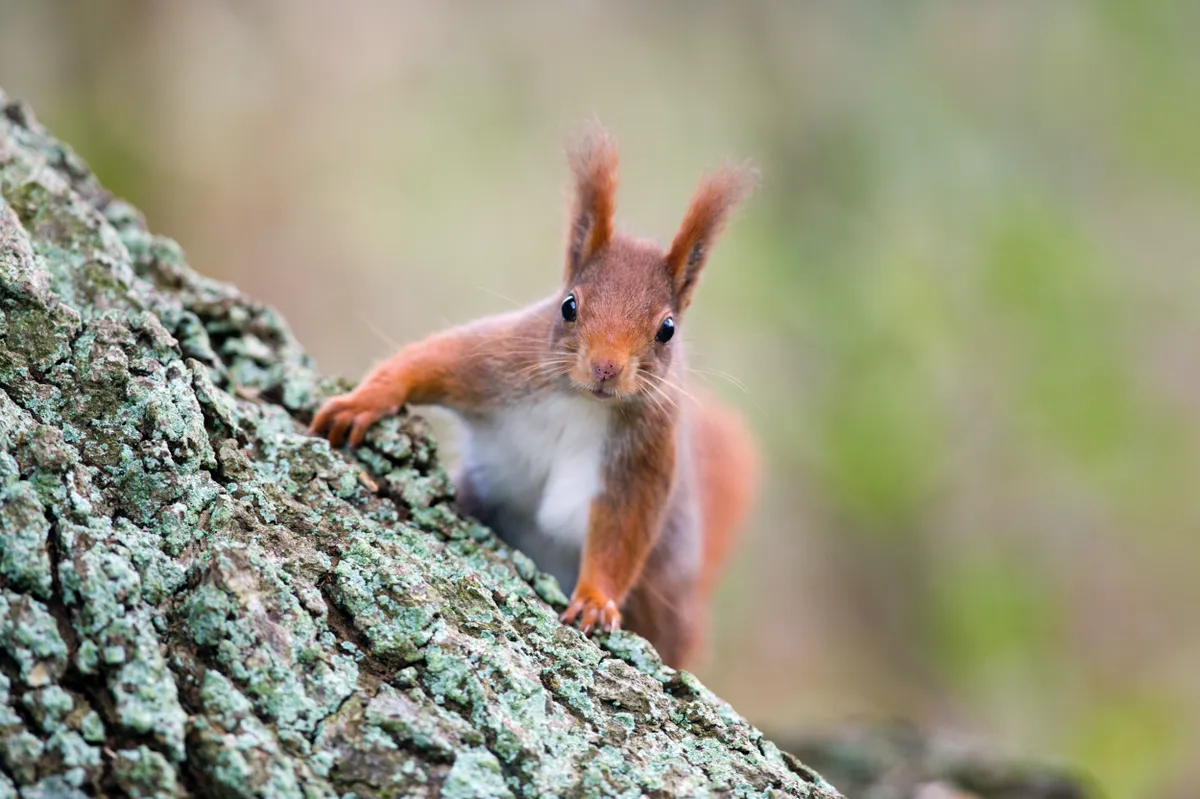
Britain and Ireland’s native red squirrels are now at their most photogenic. Though they have adorable ear tufts all year, these become longer and even more extravagantly fluffy in winter, after the autumn moult. Despite their name, the squirrels’ coat colour may vary a great deal, from brick-red to dark brown, often with blonde highlights in the ears or tail.
Learn more about squirrels in the UK:
Knot (Calidris canutus)
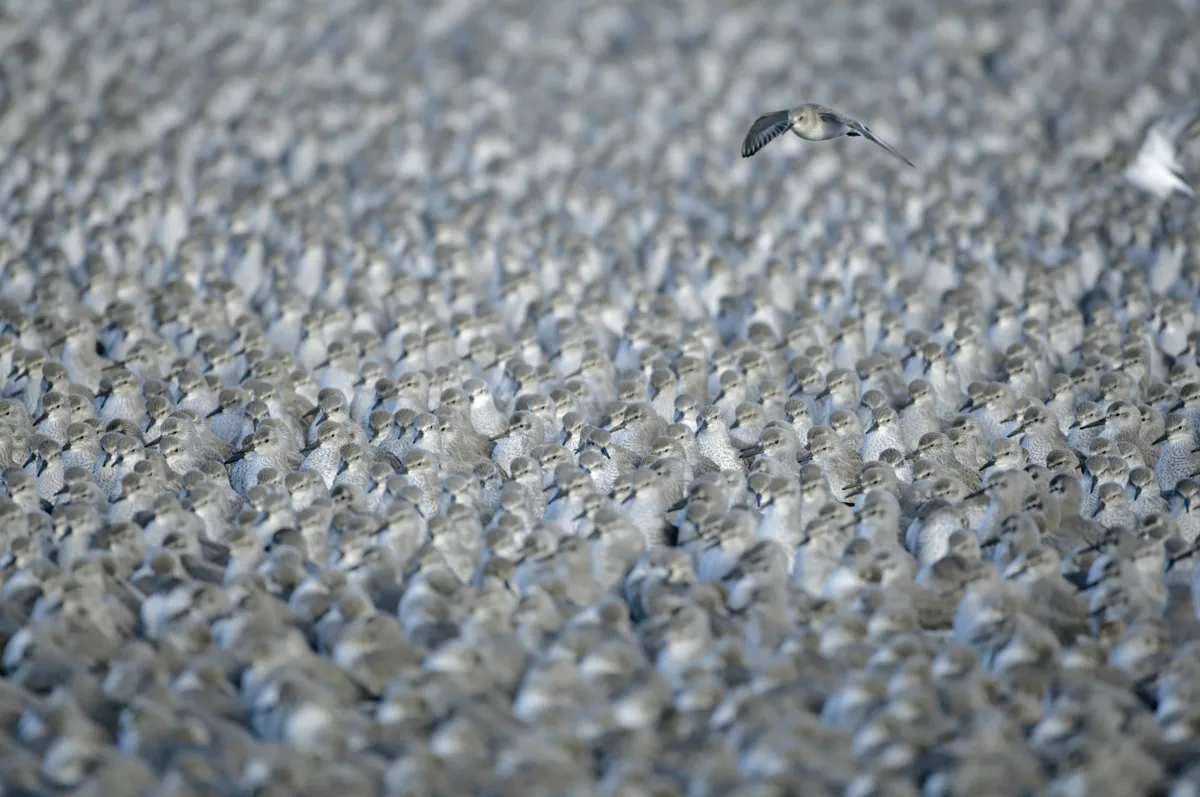
High tides force these waders from their coastal mudflat feeding grounds, pushing them towards the shore. The temporarily displaced birds gather in dense flocks, and at favoured estuaries such as the Wash and Morecambe Bay their aerial formations can be as spectacular as starling murmurations. Once settled, the thousands of tightly packed bodies create their own microclimate, keeping the birds warm.
Common yew (Taxus baccata)
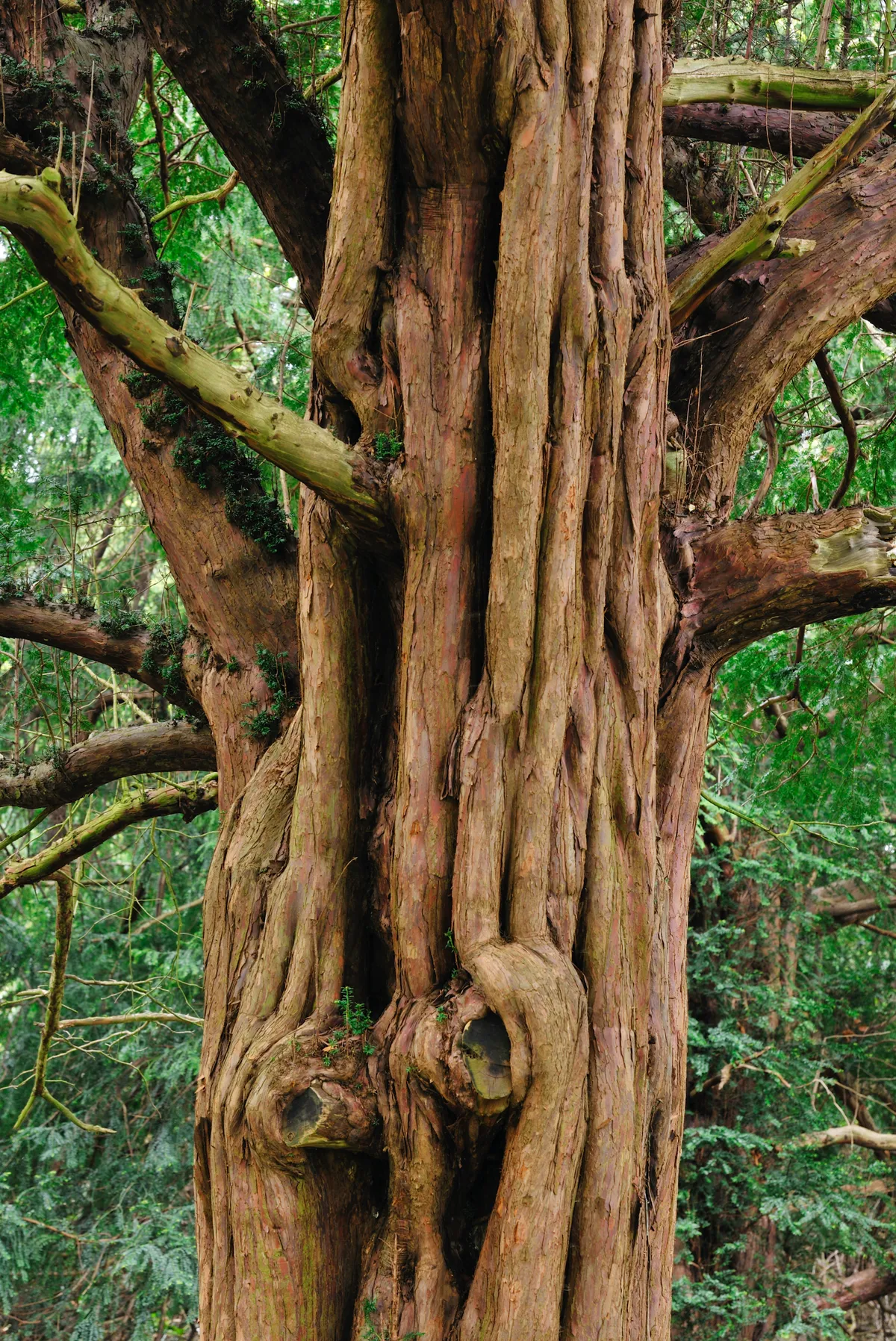
In Britain, the royal family – especially Queen Charlotte, wife of George III – helped to popularise the Germanic tradition of bringing an evergreen tree indoors to decorate at Christmas. It’s less well known that the custom originally involved a yew tree, or just a solitary branch. Yew was used both in the British Isles, where it is one of only three native conifers, and in Germany, home to a wider range of species.
Yews in fact have a rich and ancient relationship with the peoples of these islands, long predating the Christmas festival. In pre-Christian times, they were associated with death rituals and important spiritual sites. So while many of the oldest yews survive in churchyards, these wonderful gnarly specimens were already old when the churches’ foundations were laid.
The trees are male or female; in winter, the latter bear red berries. Curiously, a tree might change sex, for reasons that remain unclear. Stranger still, often only one or two branches make the switch.
Greenfinch (Carduelis chloris)
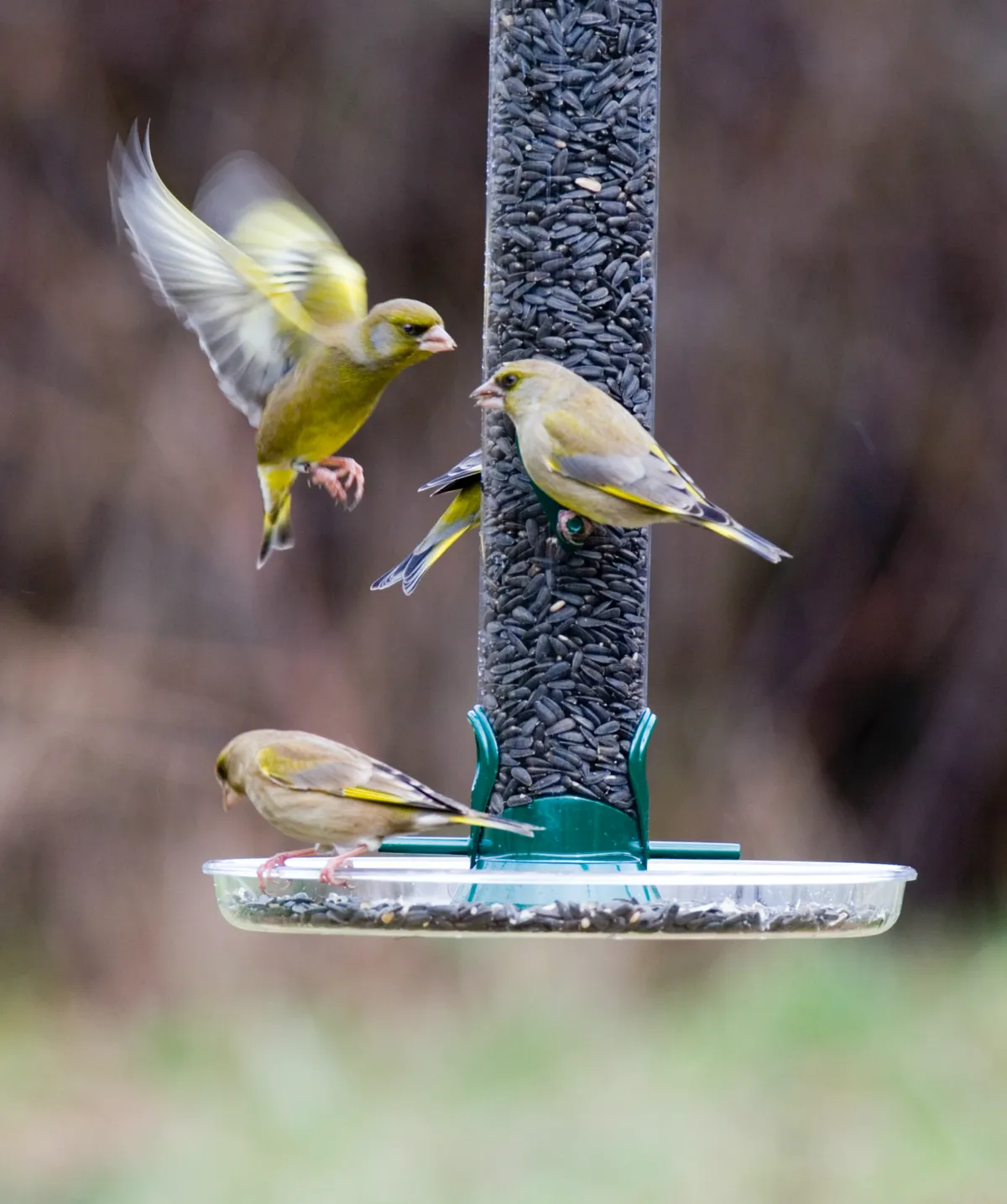
These attractive, chunky finches tend to dominate feeders, as they come high in the garden-bird pecking order, behind only great spotted woodpeckers and nuthatches (and ring-necked parakeets, if you have them). Their visits are extra-special nowadays, due to a tragic collapse in their UK population.
Greenfinch numbers have fallen by over 60% since the late 1990s. The scale of decline first became evident in 2006, for example in data from people taking part in the BTO’s popular Garden BirdWatch survey.
Research by the Garden Wildlife Health project has since shown a link with trichomonosis, a highly infectious disease also found in doves and pigeons, and which various other garden birds can catch. Bringing birds together at feeders could therefore be a mixed blessing; nature lovers have unwittingly created the perfect conditions for avian disease. To help control its spread, clean feeders fortnightly and report sick birds to the project.
Learn more about finches:
Hen harrier (Circus cyaneus)
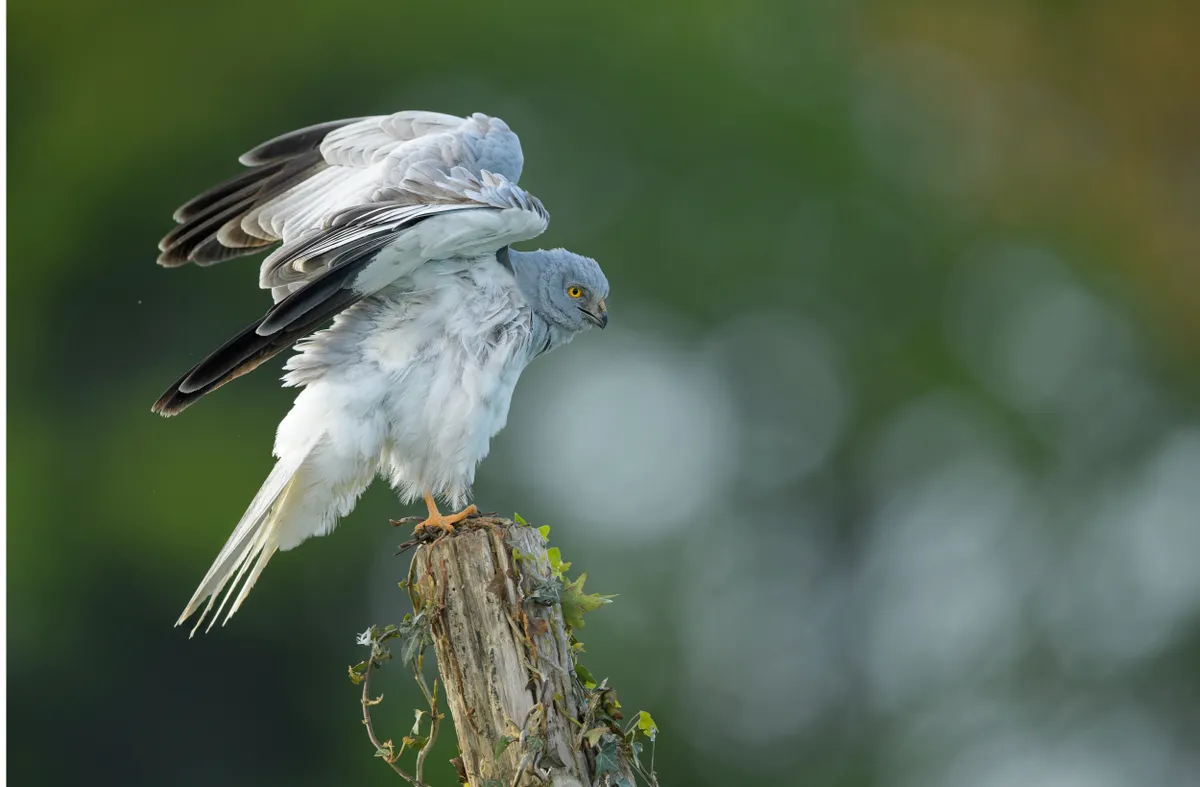
During the winter months, hen harriers roost communally. The roosts are on the ground, among tussocky grass and in reedbeds. Sometimes, especially in southern England, they choose downs or heaths. This behaviour, shared with marsh harriers, is a little unusual for raptors and sadly makes these magnificent birds very vulnerable to anyone minded to persecute them.
In late afternoon as the light fades, the harriers begin to drift in to the roost. There is an ease to hen harrier flight that is breathtaking; they seem to row through the air without any effort at all, hugging the ground and following its contours. They glide frequently between beats, on wings lifted in a ‘V’.
Females and juveniles, nicknamed ‘ringtails’, are mostly brown, with a contrasting white rump and barred tail. But the ghostly, pale-grey males are what most birders are hoping to see in the gathering gloom.
Learn more about harriers, birds of prey and roosting birds:
Garden snail (Cornu aspersum)
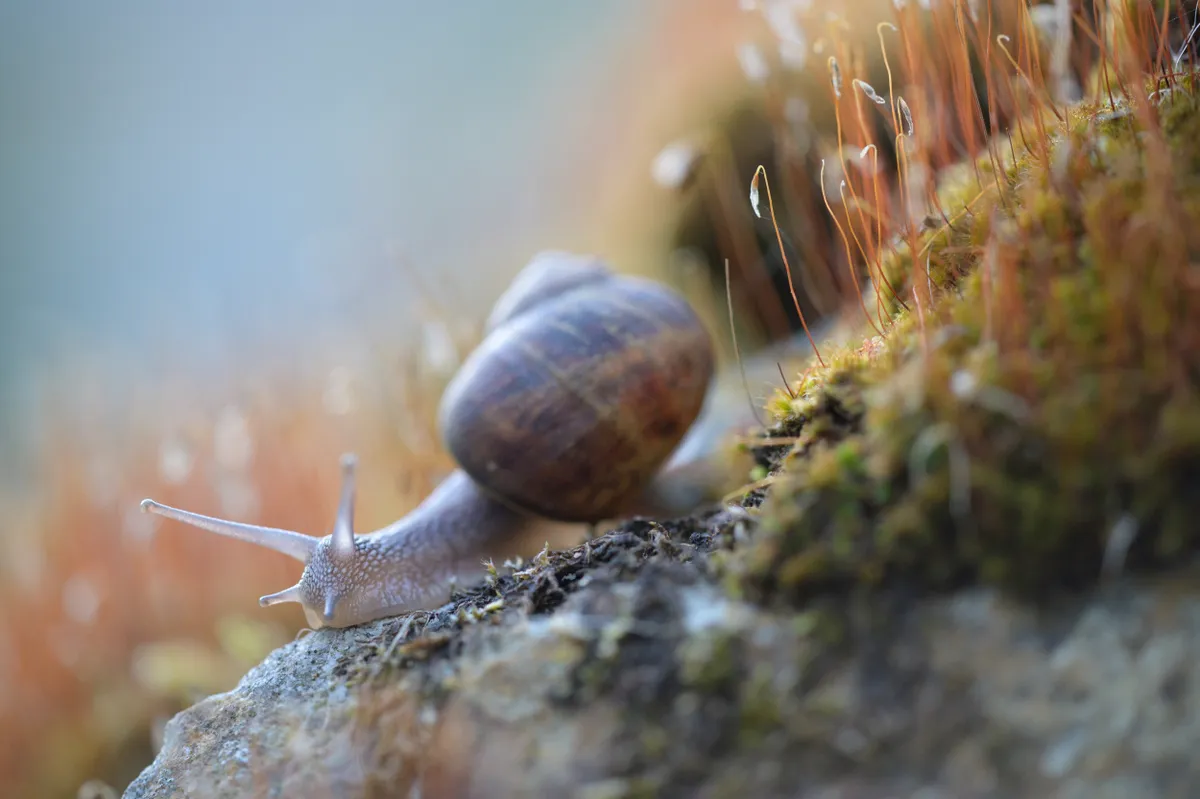
Where do all the snails and slugs go in winter? With garden snails, at least, you have a good chance of finding out. As molluscs, they belong to one of the planet’s most successful groups of animals, with far more species described than all of the vertebrates put together. However, these terrestrial species have a big problem. Dry air and frosts are killers for soft-bodied creatures.
Being nocturnal helps, but in winter (and during heatwaves in summer), extra evasive action is called for. The snails and slugs sit it out by hibernating (in summer this dormant state is known as aestivation). Slugs often burrow into the earth, while snails stay above ground, sealing themselves into their shell with a thick layer of slime. You can often find garden snails hibernating like this in clumps, stuck together and squeezed into cracks in walls or under flower pots.
Learn more about slugs and snails:
Hart’s-tongue fern (Asplenium scolopendrium)
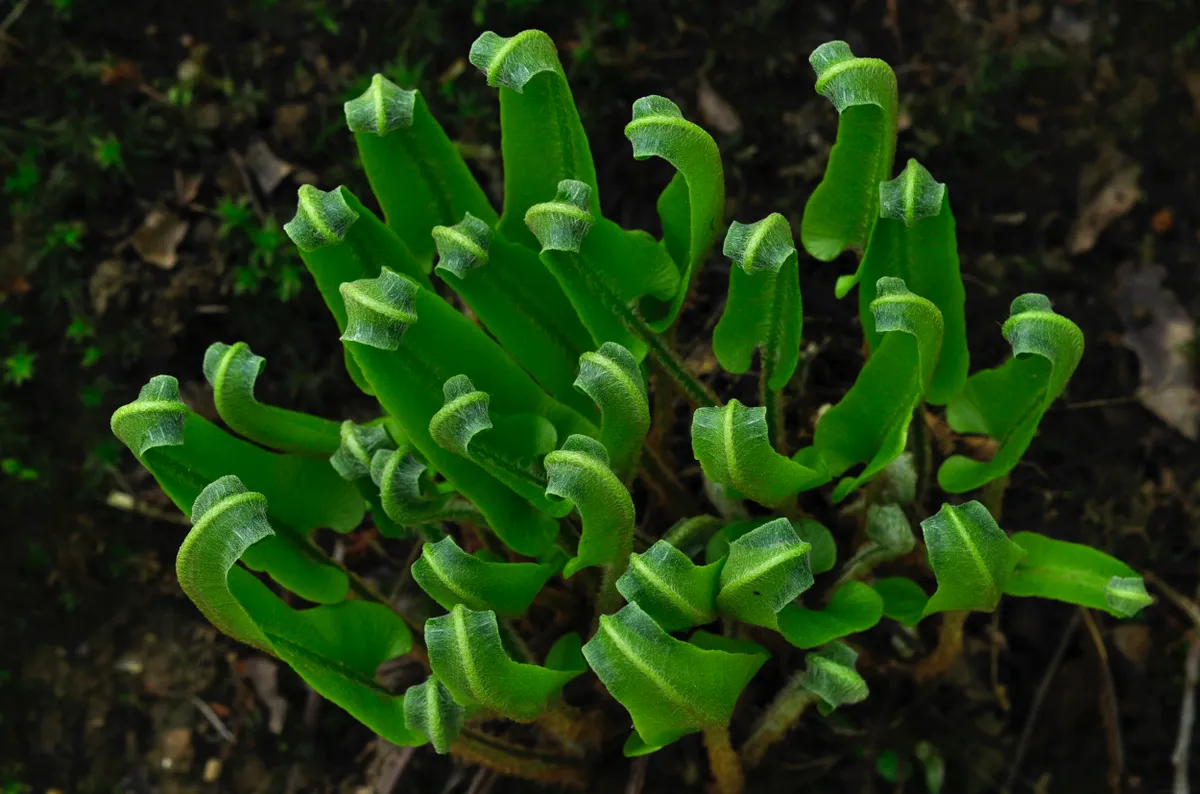
“Swallowed any ferns lately? You probably have, as their minute spores are swirling around us all the time.” Ace naturalist Brett Westwood is being playful here, in his 2017 book Wonderland co-authored with Stephen Moss. But he makes a serious point. Ferns are ancient, flowerless plants that reproduce not with seeds but with vast quantities of spores: “specks of primeval dust, which surround us wherever we are.”
Ferns become more visible in winter, when many flowering plants die back and take a back seat. One of the most distinctive species is hart’s-tongue fern, whose wide, leathery, strap-like leaves look – ironically – rather unferny.
Its green rosettes, the colour of Granny Smith apples, may be seen brightening up woods and other damp environments all over Britain. They thrive among mossy rocks beside water, and in the Pennines and Yorkshire Dales, deep in the cracks of limestone pavements.
Learn more about ferns and other plants to spot this winter:
Goldfinch (Carduelis carduelis)

God knows the world needs allthe good it can get right now –Out in the gardens and fields,Goldfinches are gilding the land for free
The opening lines of Goldfinch, a poem in Robert Macfarlane and Jackie Morris’s book The Lost Spells, remind us that garden birds are joy-bringers in difficult times, yet not something we can take for granted. Canaries in the coal mine, their fortunes should concern us all.
Perhaps this is why we feed birds, and the goldfinch is a perfect example of how doing so can change the populations and behaviour of individual species. In Britain, our relationship with this glittering gem with the tinkling voice is particularly close. Always a prized cage bird, it nowadays is better known as one of the most familiar visitors to garden birdfeeders.
The goldfinch population has soared in recent years, boosted by our winter offerings of countless tonnes of sunflower hearts (until three decades ago an exotic sight in British gardens), which the fine-billed finch adores. According to the British Trust for Ornithology (BTO), the UK now has an estimated 1.65 million breeding TV pairs of goldfinches – more than carrion crows or rooks – a dramatic rise probably also assisted by milder winters.
The goldfinch's scientific name, Carduelis carduelis, is an example of a tautonym, where the genus and specific name are the same.
Starling (Sturnus vulgaris)

We tend to forget that Britain is the source, as well as the destination, of invasive ‘alien’ species. Take the starling. As revealed by BBC Radio 4’s fascinating documentary Shakespeare’s Starling, in the 1890s a US society had the bright idea of introducing many European species of bird mentioned by the bard – with devastating consequences. Now there are more than 200 million starlings in North America, and they’re wreaking havoc.
Back in the bird’s native range, however, we face the opposite problem – dwindling numbers. Starlings are on the Red List of species of conservation concern, due to steep declines in their breeding population. So the awe-inspiring aerial manoeuvres, or murmurations, that starlings perform before going to roost in winter are noticeably thinner on the ground than they were as recently as the 1980s.
Yet the dusk displays, which are swelled by migrant birds fleeing the harsher conditions in Scandinavia, Eastern Europe and Russia, remain a highlight of the wildlife watcher’s calendar.
The best murmurations usually occur on cold, still, clear evenings between December and February. An episode of Radio 4 series Naturebang explores the science of these spectacles... and how the starlings manage not to smash into one another.
Learn more about starlings:
Brown centipede (Lithobius forficatus)
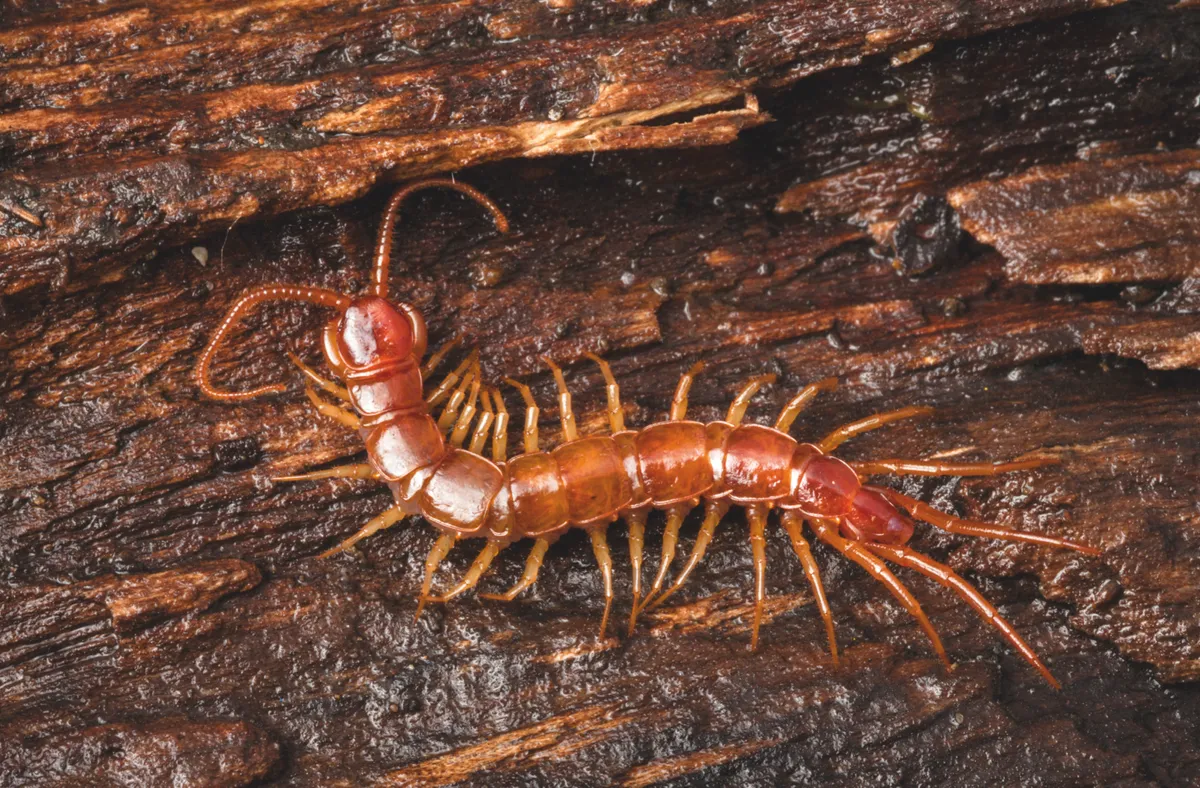
First things first: centipedes don’t have 100 legs. Some possess rather more, but the brown, or common, centipede gets by with just 15 pairs. It is among the most impressive of the 60 or so species of centipede in Britain, and mouldering bark and leaves can be a good place to find it.
Leaf litter creates a musty microclimate, substantially warmer than chilly winter air, so stays full of invertebrate activity. This is why so many animals, from blackbirds and robins to chickens and wild boar, love scratching about in leaves.
Grey wagtail (Motacilla cinerea)
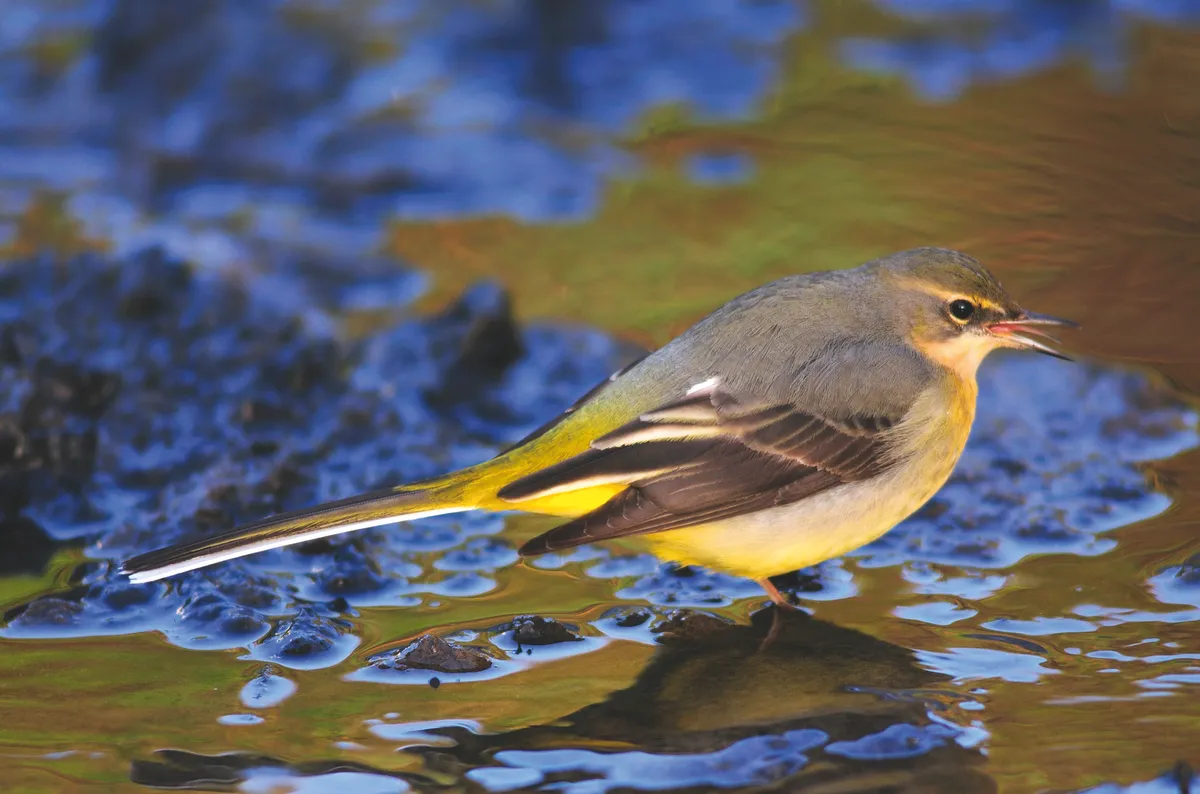
Both wagtails present in Britain this season frequent built-up areas. Pied wagtails forage on the tarmac of car parks and roost in street trees, including at shopping centres and London Heathrow Terminal 5. Grey wagtails, in summer associated with rushing streams, swap uplands for urban canals and rivers and the puddles on platforms and office roofs.
In 1973’s The Unofficial Countryside, Richard Mabey describes “grey wags” overwintering in London, flitting about the rafts of debris that have built up at canal locks, and hopping between bits of floating polystyrene.
16-spot ladybird (Tytthaspis sedecimpunctata)

Winter is coming, and one of the consequences is the disappearance of insects. With searching, however, some can still be found. Ladybirds overwinter in huddles, occasionally dozens strong, and these may be seen in cracks in bark and walls, around window frames or under piles of leaves.
You’re most likely to meet seven-spot ladybirds and non-native harlequins, but others to look for include the black-on-yellow 16-spot ladybird. Some clusters seem very exposed, yet these beetles are toxic. The brighter the colours, the more toxic the species.
December moth (Poecilocampa populi)
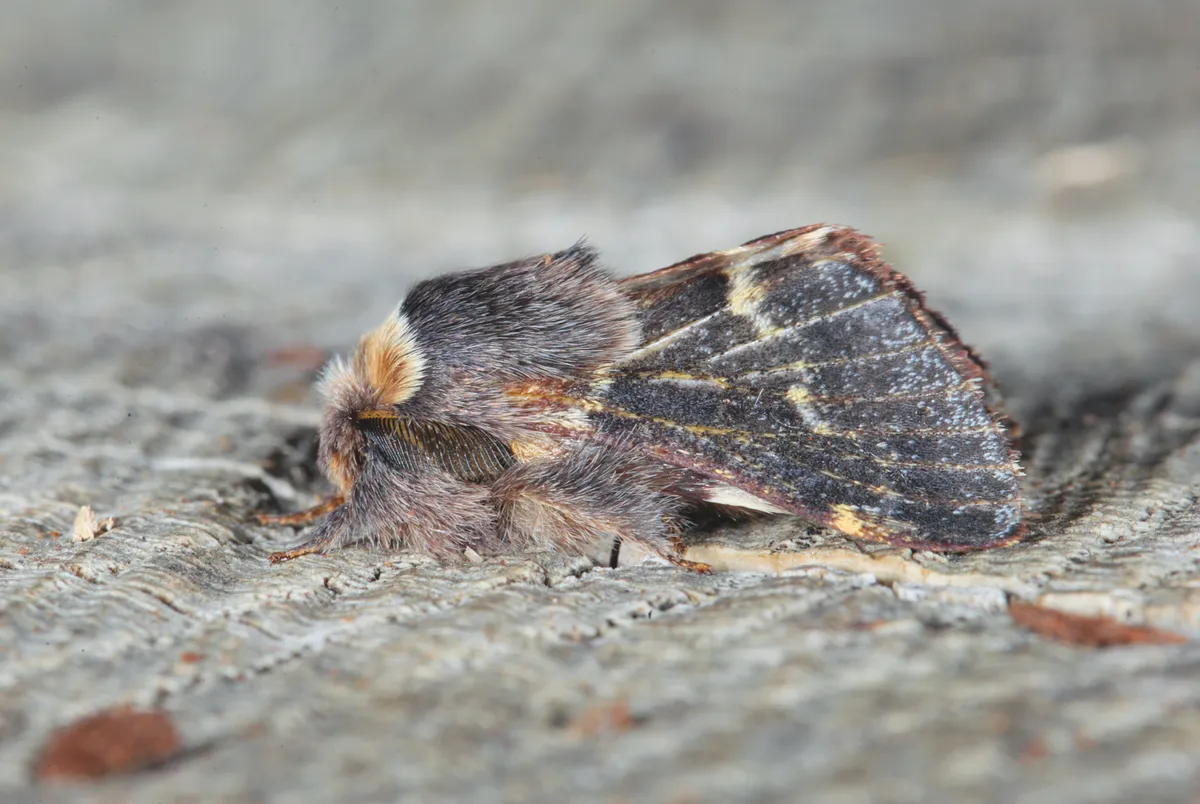
This handsome, if subtly marked, moth is drawn to buildings by artificial light, usually on December evenings, though it may also emerge in October or November. As befits a winter-flying species, its body is swaddled in thick fur.
The other key feature to look for is cream lines running across Bournville-brown wings. In common with other moths active in winter, the adult insect never feeds – the only thing on its mind is tracking down a mate.
Polecat (Mustela putorius)

In winter, wildlife often comes to us. So it is with the polecat – an exceptionally elusive nocturnal predator that, despite its ongoing comeback from persecution-driven decline, remains one of the hardest of all British mammals to see.
Like its domesticated ferret relatives, the polecat is a hunter of small mammals, and at this time of year it becomes a ratter, venturing closer to our outbuildings, chicken runs and allotments. It remains almost impossible to plan a polecat sighting, but you never know.
Learn more about mustelids:
Brent goose (Branta bernicla)
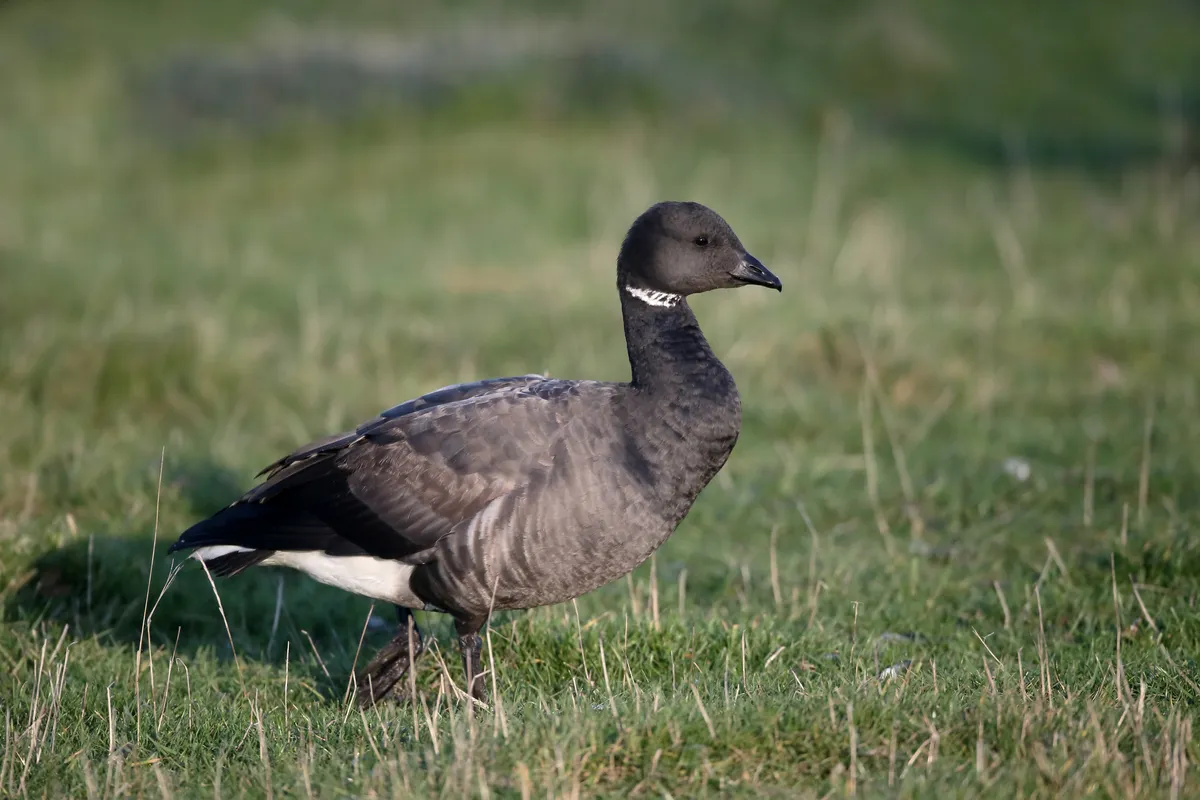
The British Isles welcome internationally important numbers of this smart little Arctic goose in winter. In his Tweet of the Day commentary, Chris Packham says the bird is dressed for a funeral, but the excitable yapping of its flocks is far cheerier.
There are two forms – dark-bellied geese head to the saltmarshes and harbours of the Channel coast, Thames Estuary and North Norfolk, while pale-bellied geese gather in Northern Ireland, especially at Strangford Lough. All are here for the same thing – lush eelgrass in the shallows.
European robin (Erithacus rubecula)

Pictured among snow-dusted holly berries or on a garden spade or chair, fluffed up against the cold, or nesting in a discarded rusty teapot or battered boot, the robin enjoys iconic status in British popular culture. Especially so at Christmas, when this perky member of the chat family holds a special place in our affections.
The barn owl – its closest rival in 2015’s poll to choose a national bird, organised by the ‘Urban Birder’ David Lindo – never really stood a chance. Robin Redbreast romped home.
Learn more about European robins:
Common kingfisher (Alcedo atthis)
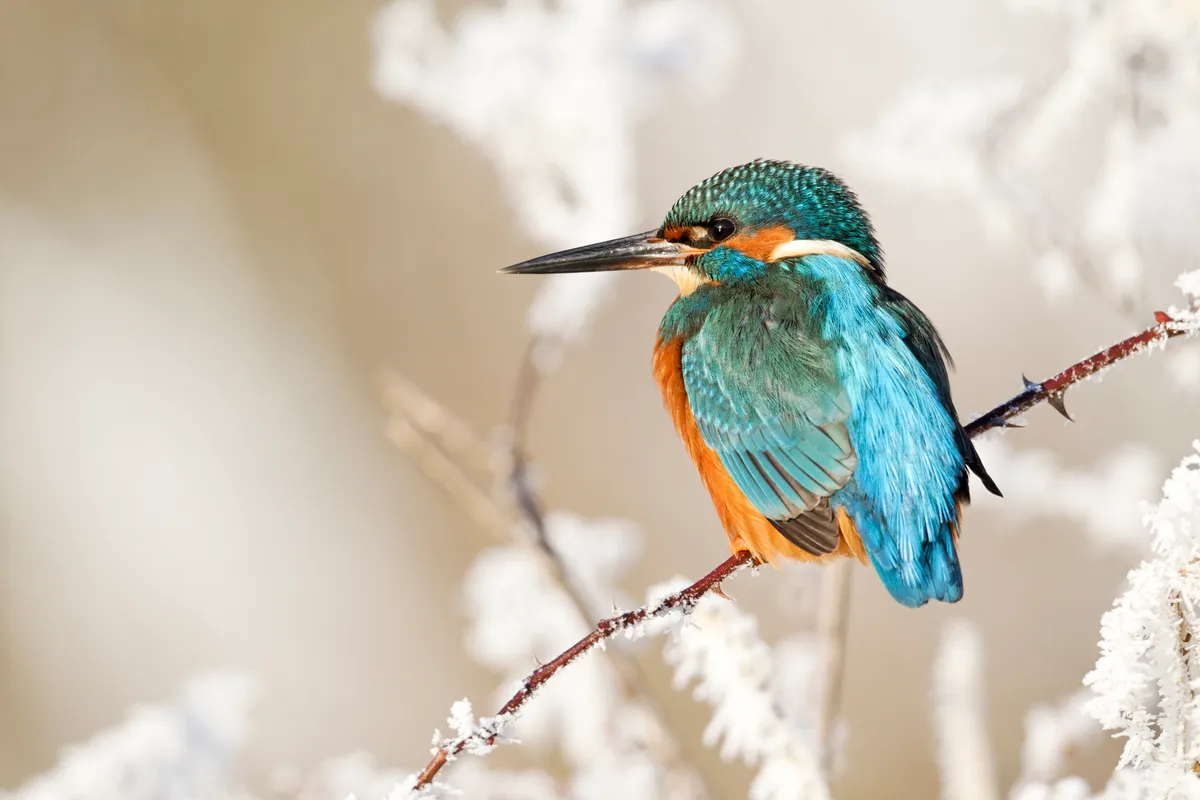
When the ‘Beast from the East’ brought Siberian weather to much of Europe in March 2018, a photograph of an unlucky kingfisher frozen solid in the ice of a Dutch canal was widely published in newspapers and went viral on social media. Ice looks pretty, but it’s a killer. For some birds, freezing spells lasting any longer than a couple of days can be a major cause of mortality.
Kingfishers are particularly susceptible, as are grey herons, barn owls (because their rodent prey stays underground), and insectivorous species such as goldcrests and Dartford warblers. A big freeze sends their populations tumbling, though numbers recover after a run of mild winters.
Eurasian magpie (Pica pica)

Magpie counting rhymes have many variants and apparently date back at least as far as the 1700s. Strange, then, that gatherings of magpies pass most of us by. These members of the crow family roost communally year-round, but especially in winter.
Unlike other corvids, which favour tall trees, magpies like to roost quite low in dense, thorny trees and scrub. They turn up in groups, settling down after sunset. Usually, the roosts are small – a few dozen birds at most – though assemblies 200–250 strong are known.
The magpie's scientific name, Pica pica, is an example of a tautonym, where the genus and specific name are the same.
Brown hare (Lepus europaeus)
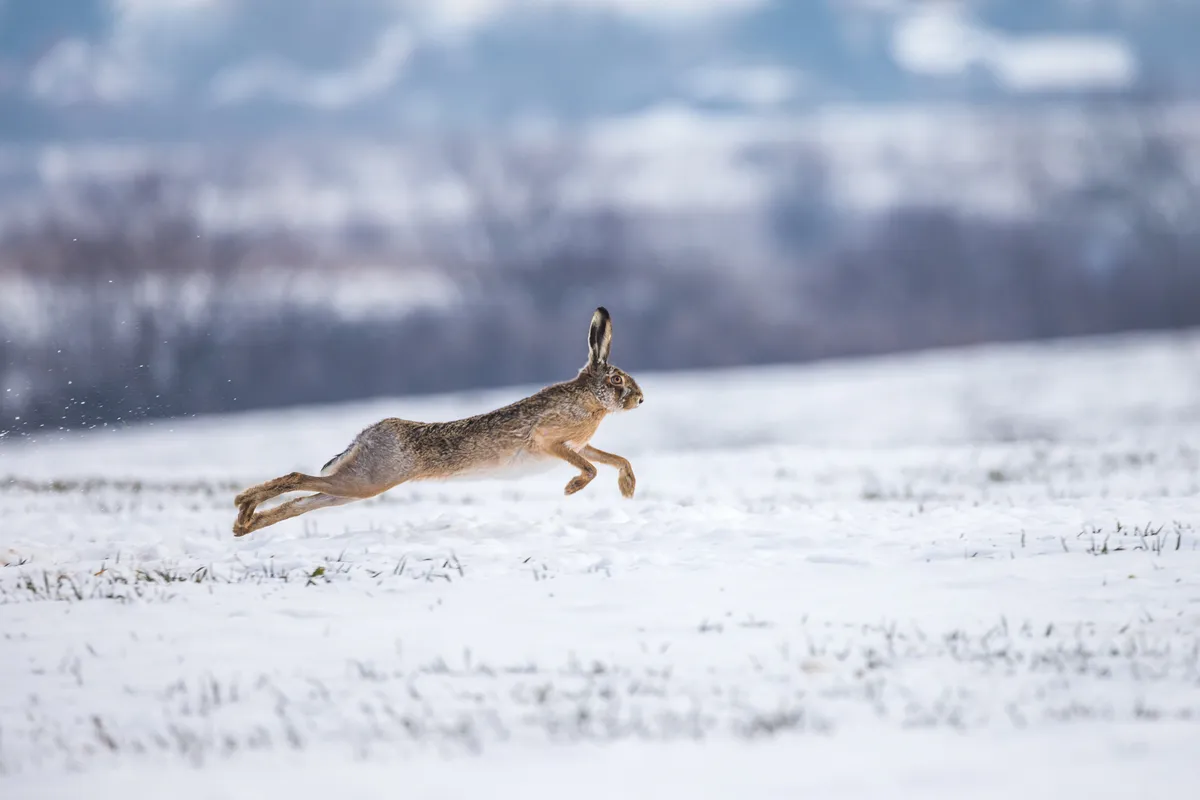
Long before brown hares were brought to the British Isles, most likely by the Romans, they lived in the vast grasslands of easternmost Europe and central Asia. As steppe animals, they evolved to survive extremes of weather with little or no shelter. This explains their remarkable hardiness – hares do not use burrows, but merely hunker down in shallow scrapes called ‘forms’.
In winter, they find food by scrabbling snow aside or, if necessary, resort to browsing shrubs, twigs and even bark. Flooding and cold, wet springs are probably more of a threat than snow.
Great black-backed gull (Larus marinus)
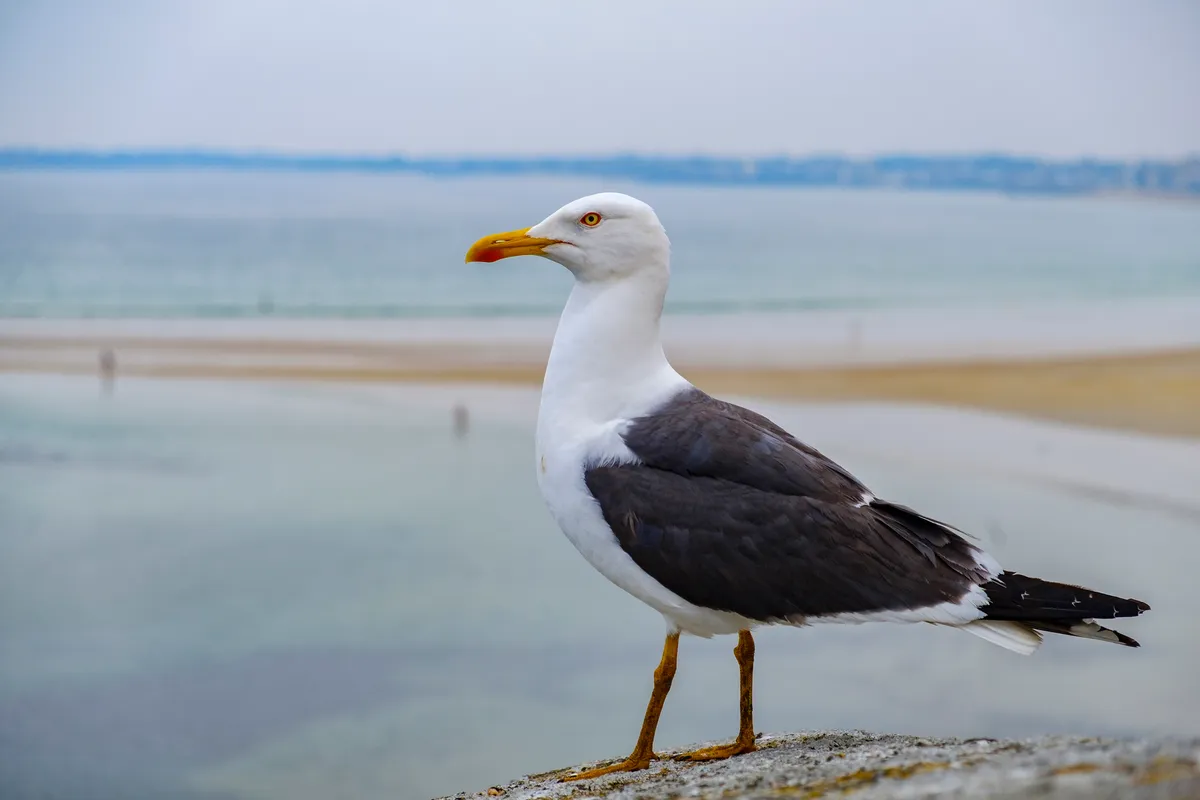
Easily larger than a buzzard, with a whopping, meat-cleaver bill, this is our most impressive gull. But it could do with a few more friends – pinching food from hapless cormorants, or wolfing down defenceless puffins, is not a good look. During summer, great black-backs are thinly spread around our coasts.
So, it’s in winter, when many birds move inland and visiting migrants swell the population threefold, that you’re most likely to spot these gulls. One place they love is landfill sites, and nature writer Tim Dee explores this in his book, Landfill.
Long-tailed tit (Aegithalos caudatus)
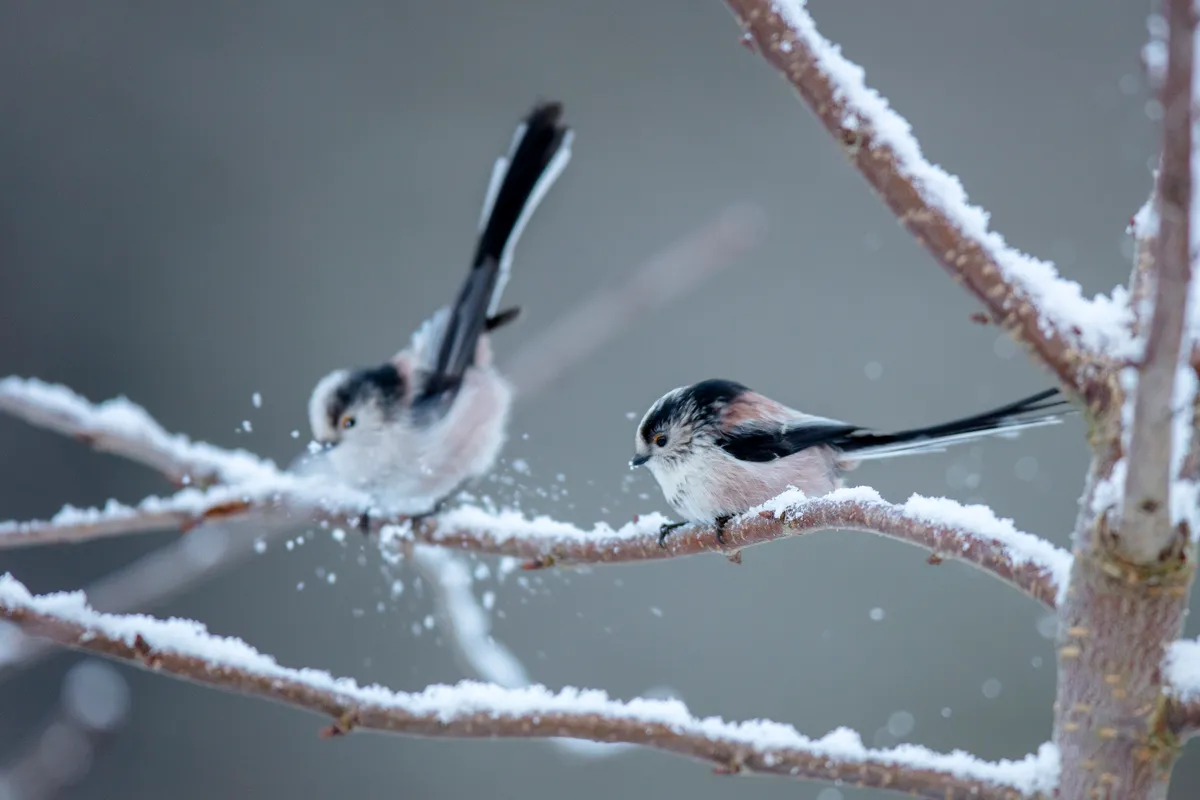
One of Britain’s remarkable winter wildlife spectacles is rarely glimpsed by humans. On bitterly cold nights, long-tailed tits will line up on a branch deep inside a thick hedge or bush, nestled together for warmth. The roosts contain related individuals, often adults and their offspring.
By day, these family parties are much more public, drawing attention to themselves with high-pitched volleys of slurring ‘srih-srih-srih’ calls.
Ordinary moss (Brachythecium rutabulum)
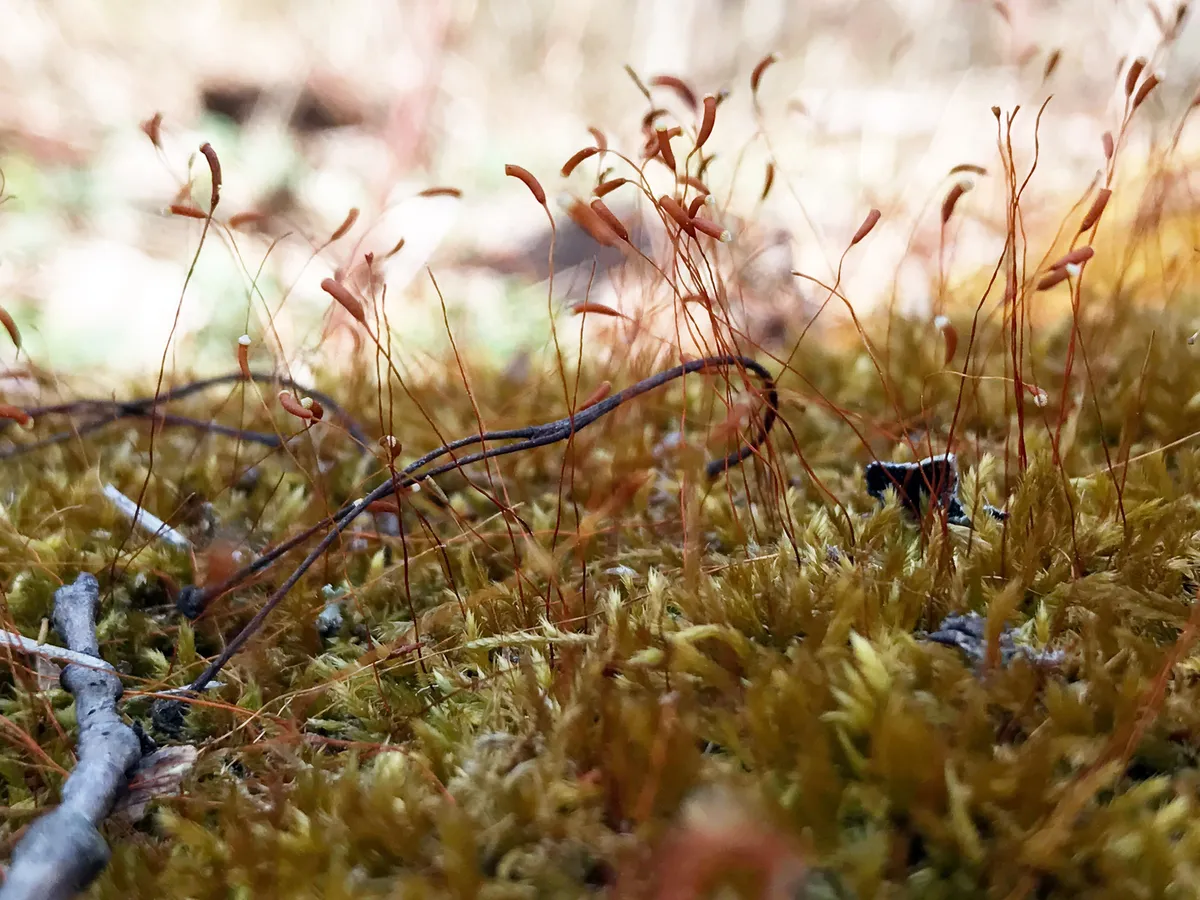
‘Ordinary’ seems a rather unfair name for Brachythecium rutabulum. The more descriptive alternative is rough-stalked feather moss. This little damp- and shade- loving plant suddenly transforms into a mini forest when it produces its sporophytes – the delicate, stalk-like structures that disperse its spores.
Horatio Clare, in his book, The Light in the Dark, compares the effect to a “host of tiny green diplodoci standing together, their heads bent heavy on the ends of long necks.”
Turnstone (Arenaria interpres)
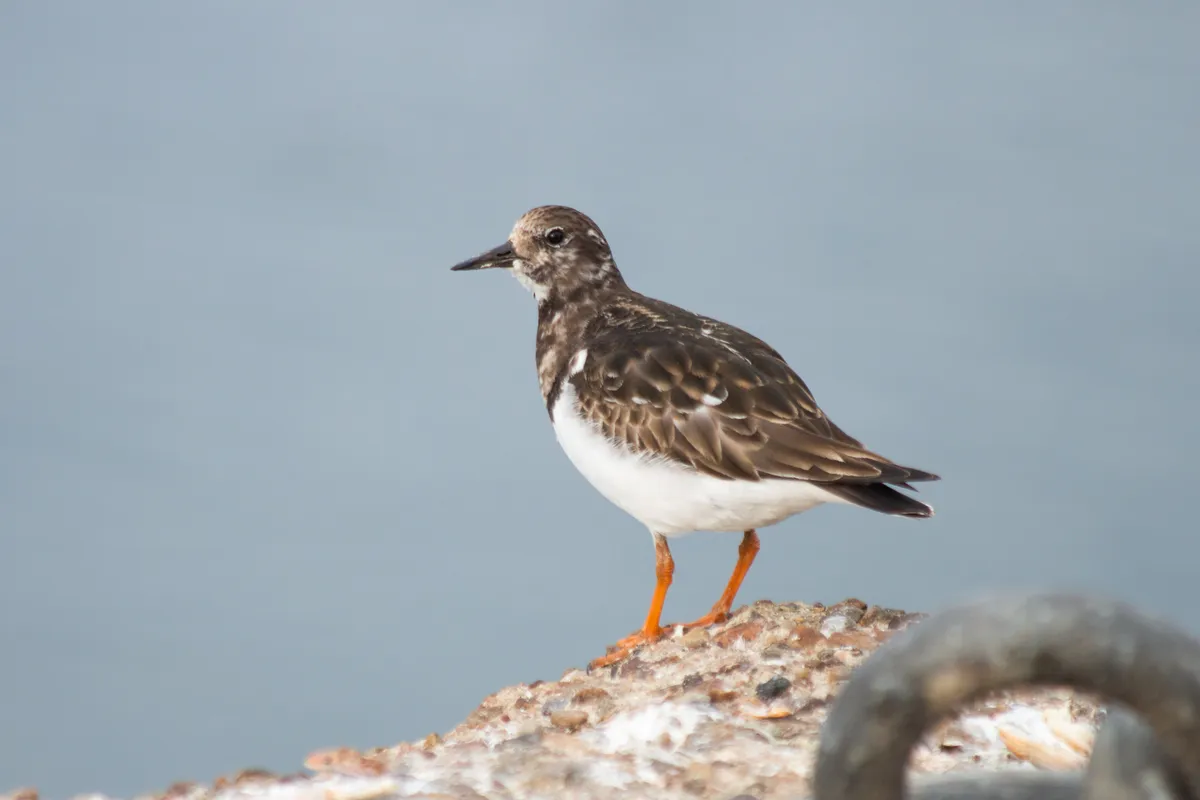
After breeding on High Arctic tundra, turnstones spread out across the planet, visiting coastlines of every continent except Antarctica. Our wintering population comes all the way from Canada and Greenland.
These tough, chunky waders busily work through tideline flotsam and jetsam, turning over seaweed and pebbles to snap up small invertebrates underneath. They’ll happily pick at the carcasses of seabirds, seals and cetaceans; some will even come to bread.
Red kite (Milvus milvus)
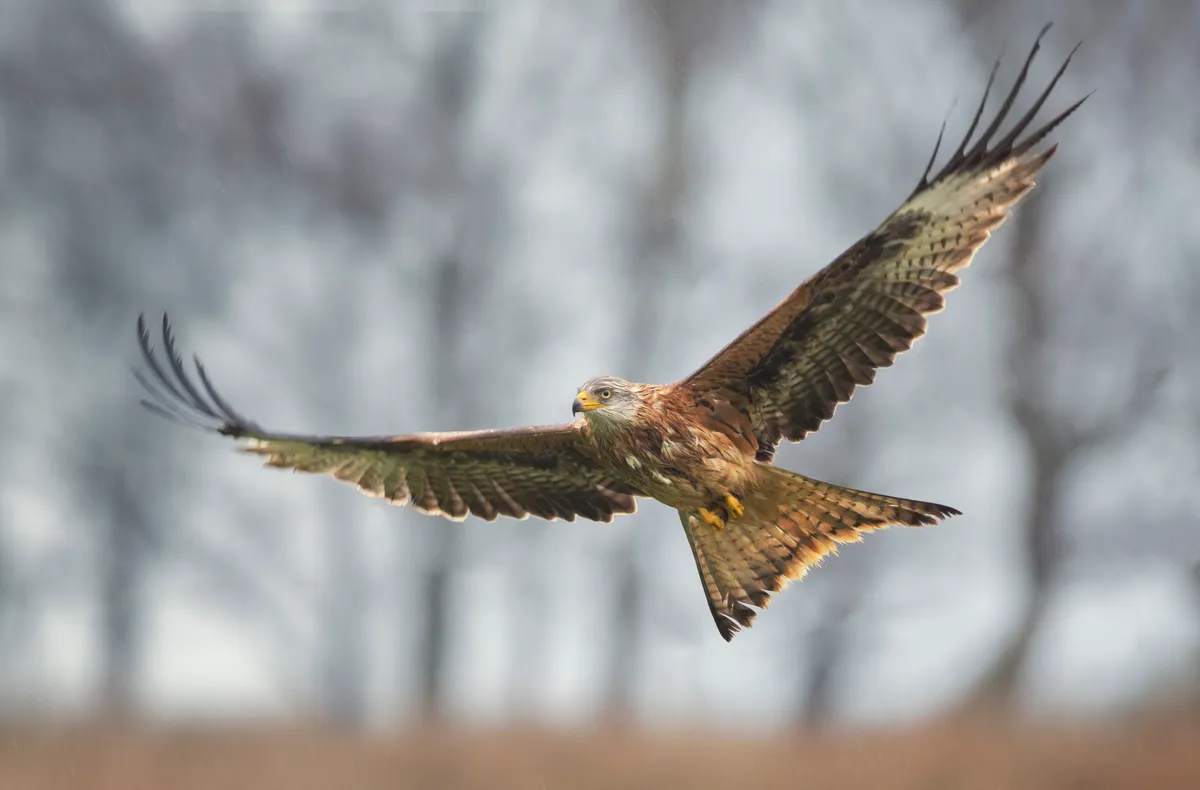
Extinct in England in 1871 and in Scotland eight years later, the red kite just about clung on in mid- Wales. Reintroduction schemes have since transformed its fortunes, and now the raptor is one of the species that Mark Cocker, in his book Our Place, refers to as “wild British Lazaruses”.
There is no better illustration of the kite’s dramatic comeback than the spectacular gatherings at feeding stations, such as Gigrin Farm in Powys or Bellymack Hill Farm in Dumfries and Galloway. Expect to see dozens of kites, plus buzzards, ravens and crows. They look at their best in the low winter light.
The red kite's scientific name, Milvus milvus, is an example of a tautonym, where the genus and specific name are the same.
Stoat (Mustela erminea)

In this all-white pelage, the stoat is perhaps Britain’s most attractive mammal, but predicting where you might spot an ermine is tricky. It’s more likely in northern uplands, though ermines do get reported further south, including in Cornwall and Suffolk in recent years. Various factors control the whitening, including an individual stoat’s heredity, falling temperatures and snow cover. Severe weather conditions one year increase the likelihood of a change next winter.
Learn more about mustelids:
Holly (Ilex aquifolium)
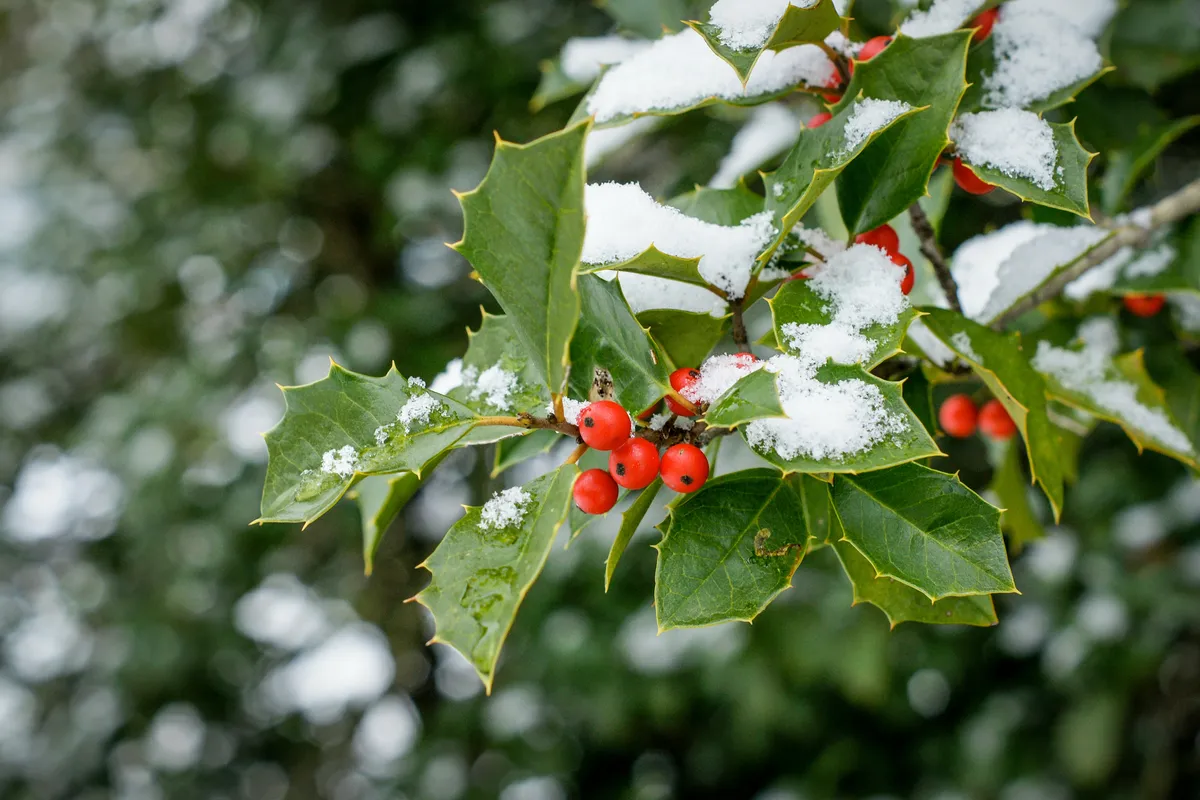
Since medieval times, holly has been gathered at Christmas to decorate churches and houses, the blood-red berries supposedly offering protection from evil. Back then, superstitious people may have wondered why only some trees bear fruit, but today we know the answer.
Each holly tree is male or female, a condition known as dioecious, and that makes self-pollination impossible. So although all hollies have pretty white flowers in spring, only female trees will go on to produce berries, which develop from fertilised flowers. They can only do that, of course, if male trees are nearby to supply the necessary pollen.
Technically, the fruit is the stone-like part in the middle; the scarlet skin is the exocarp, while the orangey flesh is the mesocarp. Of all our garden birds, blackbirds and thrushes are especially fond of holly berries.
Mountain hare (Lepus timidus)

“The nature of winter is one of simplicities...the wild world reduced to its barest essentials,” reflects Jim Crumley in his book The Nature of Winter. Perhaps the ultimate British example is a mountain hare hunkered down amid drifting snow. Milder winters and controversial culls have made this classic scene much harder to come by. You can still find these native hares in much of the Highlands, as well as southern Scotland, a few islands and the Peak District, but white-on- white encounters are something to treasure.
